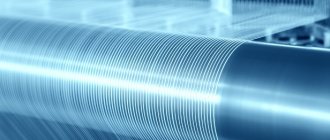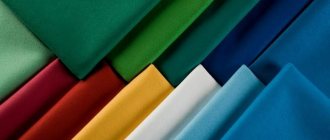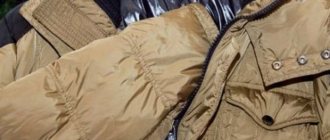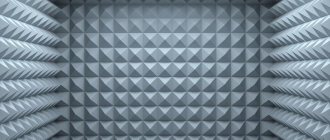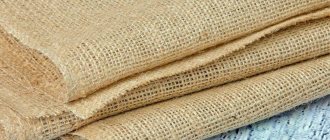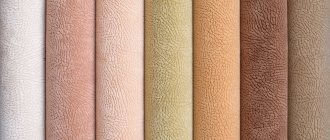History of origin and manufacturing technology of filler
Polyester insulation is the name of a fiber created on the basis of polyethylene terephtharate. The material appeared in the first half of the 20th century. and was mainly used in chemical, automotive, food and other industries. Mass distribution began a few years later, in the 1960s, when it was discovered that fabric clothes do not wrinkle and practically do not get dirty. In addition, the cost of insulation for polyester clothing was much cheaper.
Material polyester
Important! The name differed in different countries: in the USSR it was lavsan (later synthetic winterizer), in the USA and Europe - polyester (or foamed polyester), Dacron, Melinex, etc.
The starting material for insulation is fiber obtained from gas and oil products. Production consists of several stages:
- The raw materials are pre-prepared: cleaned and loosened.
- The purified raw materials are pressed through dies (special molds), after which fibers are obtained.
- The fibers are dyed and processed, then formed into a cloth.
- The canvas is undergoing final finishing.
Important! The properties of the finished material largely depend on the method of bonding the fibers in the fabric.
Insulation in clothes
Advantages and disadvantages of fabric
Like any other fabric, polyester has advantages and disadvantages. The advantages of the material include:
- Low wear and tear.
- Does not stretch or shrink when washed.
- Pleasant to the touch, well suited for sewing clothes.
- Easy to care for, requires normal washing, drying and ironing conditions.
- Does not lose its original brightness for a long time.
- Does not form “pillings” and does not fade when washed.
- Does not create favorable conditions for the development of moths, dust mites, and harmful microorganisms.
Disadvantages of the material:
- High density. The fibers are of chemical origin and tightly woven into fabric. Air permeability tends to zero. Therefore, polyester products are not suitable for summer.
- Rigidity. Its synthetic origin does not allow the material to be as soft as its natural counterparts. To solve this problem, cotton or elastane is sometimes added to the composition.
- Possible allergy. Polyester fiber is not recommended for people with sensitive skin. It is especially undesirable to use the material for those who suffer from psoriasis.
- Electrification. The accumulation of static is a known property of any synthetics. Due to this, products made from polyester fibers are attracted to the skin and collect dust and other particles. An antistatic agent will help remove static electricity.
High-quality polyester is produced using the latest equipment and is quite capable of competing with natural materials.
Types of materials and their main characteristics
Polyester is the name of the substance from which different types of fillers are made. Due to differences in manufacturing, they have different characteristics and are designed for different weather conditions.
100% polyester insulation
Polyester filler was popular in the USSR, but today it is used much less frequently. This is due to its shortcomings: it caked, lost its shape, and could not be washed often. Today, other materials are used for outerwear and blankets: isosoft, holofiber, etc.
You may be interested in 100% polyester fabric: synthetic material or not
Holofiber
Hollofiber is a non-woven synthetic material made from hollow polyester fibers twisted in a spiral. Its feature is the soldering of fibers using high temperatures (in the rest they stick together). The material has a high level of heat and sound insulation, allows air to pass through well, but retains moisture, is resistant to washing and physical impact, holds its shape well and restores it. The material is also hypoallergenic, it does not harbor insects and does not accumulate dust.
Holofiber insulation
Thinsulate as an innovative insulation
The second name is artificial swan down. Initially it was used as insulation for space assemblies; today it is also used in the manufacture of outerwear. Can be worn at temperatures down to -40 °C, does not absorb odors and water, and does not interfere with air circulation. Also, the material is quite thin and light, easy to wash and clean, and does not wear out over time.
Thinsulate insulation
Isosoft
This is a modern insulation, the fibers of which are coated with special polymers to enhance heat-insulating properties. They are highly twisted and the fibers are often spherical in shape. The filler is used in pillows, blankets, sleeping bags, and winter outerwear. Depending on the density, the material can withstand from -10 °C to -30 °C. Isosoft allows air to pass through well, while retaining heat, is not subject to deformation and does not require special care.
Isosoft insulation
Sintepon
Sintepon is a synthetic insulation whose fibers are glued together using needles, glue or high temperatures. It was received in the mid-30s. XX century in England, it came to the USSR only in 1949. The material is quite light and comfortable to wear, does not deform (subject to temperature conditions), does not get wet and has a high level of thermal insulation.
Insulation synthetic winterizer
Sintepooh
It has all the advantages of natural fluff, but is obtained artificially. In its production, silicone treatment is used, which prevents the product from bunching up. Synthetic down can withstand down to -30°C, does not pill when washed, quickly takes its original shape and dries. When worn, the effect of a “steam room” is not created, since the air passes well through the synthetic fluff, but the heat does not escape.
Synthetic insulation
Scope of application of polyester materials
High environmental friendliness allows the products to be used not only in the industrial sector, but also in everyday life. The hypoallergenic material is odorless and does not emit harmful substances; it is recommended for installation in children's rooms. Polyester is used in the production of a number of products:
- thermal insulation materials for buildings and pipelines;
- sound insulation of air ducts and ventilation systems;
- production of bedding (pillows, mattresses, blankets);
- fabrics and artificial fur;
- insulation for clothing;
- toy filler.
Which is warmer: synthetic winterizer or polyester?
Polyester is the general name for all insulation materials made from polyester fiber. Sintepon is one of the varieties of polyester. In other words, it is impossible to say that polyester is a padding polyester, and it is also impossible to compare materials.
You might be interested in this Features of elastane: properties of fabric in clothing
Of the above, the warmest is Thinsulate, designed for extreme temperatures.
Important! For children, it is recommended to choose isosoft and holofiber, as they are environmentally friendly, affordable and easy to clean at home.
Opinions of developers, professional builders and chemists - negative points
I found an interesting article on a website on labor protection in the chemical industry. The influence of polyester resin on the human body and safety measures at work are being studied. What they warn about:
- Polyester resin bonds the fibers together to provide water-repellent and strength properties. When working with resins, safety precautions must be observed. Does this resin disappear or remain in the finished building material? Manufacturers do not answer this question.
- Polyester resins cause respiratory irritation. It is mandatory to wear a respirator when working in production. When the insulation is heated, do resin vapors not escape from the sheathing?
Production volumes speak volumes
- Fire safety - with free access to air and sunlight, spontaneous combustion is possible. You cannot extinguish the resin with water; you can only intensify the combustion. A gas fire extinguishing method is required. This means that fire retardants are obviously added to the insulation to ensure G-1 flammability standards, and these are chemical additives.
- If the resin gets on the skin, the instructions warn about the danger of redness and rash. It is necessary to urgently rinse with water, work in gloves and protective shoes and overalls. Why, since these insulating materials are easy to install and are not hazardous to health?
- Polyester resin is a strong irritant to the mucous membranes. Wear safety glasses. The question arises - where do these resins disappear from completely safe polyester insulation?
Main technical characteristics of the material
It is not surprising that it is difficult to find information about the production process of this building material. Protection of production know-how and other reasoned methods to hide the detailed composition of the material.
A few words about static electricity
Are static discharges really safe?
Polyester fiber is a dielectric and practically does not conduct electric current. That is why the surface of such a material quickly becomes electrified. Everyone is familiar with the tiny sparks in the dark when you take off synthetic clothing.
It is this property that is inherent in all polyesters. Static electricity accumulates on the surface.
The impact of static electricity on health is the topic of a separate dissertation. Basically, these are fatigue, absent-mindedness, and weakness. And long-term exposure causes a number of serious side effects. If you wish, you can find a lot of information about this on the Internet.
Now the question is whether polyester fiber insulation has the same properties to accumulate static on the surface. Has this been studied in laboratories, and what consequences can a long-term stay in a house with such insulation cause?
I will not say that polystyrene foam or mineral wool will do absolutely no harm. But at least the mineral wool boards are natural fibers and not recycled plastic bottles.
Another interesting fact. Is it possible to position this material as natural if it is made from PET bottles?
Of course, ideally, everyone strives for environmental friendliness and natural materials, but they are not affordable for everyone. But why is the cost of synthetic material equal, or even higher, than for natural types of insulation? In theory, polyester fibers should cost pennies.
What is the density of polyester insulation up to what temperature and for what weather?
The density of the insulation is calculated as the weight of the material per 1 m². The higher the density, the lower the temperature it can “survive”.
Each material will have a different meaning. For example, for padding polyester and isosoft the values will be as follows:
- 50 g/m² - for +15 °C;
- 80 g/m² - for +10 °C;
- 100 g/m² - for +5 °C;
- 150 g/m² - for -5 °C;
- 200 g/m² - for -10 °C;
- 300 g/m² - for -20 °C;
- 400 g/m² - for -25 °C.
For holofiber they are slightly different:
- 100 g/m² - for +5-10 °C;
- 150 g/m² - from +5 °C to -10 °C;
- 200 g/m² - for -10-20 °C;
- 300 g/m² - for -25-30 °C.
Important! Thinsulate is mainly used for sewing professional items (suits for alpine skiing, divers, etc.), it can withstand up to -60-65 °C.
Thinsulate in rolls
In order not to make a mistake when purchasing, you should focus on the temperature table of a specific manufacturer.
How to choose quality insulation
When choosing insulation or ready-made clothing, you should follow some rules:
- Basically, all insulation materials have similar characteristics, but they may differ in details. For example, some materials are a product of secondary petroleum processing, which means they are more allergenic;
- It is worth paying attention not only to the obvious advantages, but also to inconspicuous disadvantages. For example, 100% polyester quickly deforms with frequent washing; it should not be purchased for children or for branded clothing;
- It is important to focus on the temperature that the material can withstand. Manufacturers usually indicate the minimum and maximum;
- an unfamiliar name for a material does not always mean a new product; it may be an already familiar insulation material, but under a foreign name.
Selection of down jackets
Advertising of insulation from the manufacturer - positive characteristics
The photo shows the technical characteristics of insulation mats
The main distributors of this material on the Russian construction market are several, Lighttek, Politex and BSTV Batiz. Some of them provide certificates of compliance with environmental and fire safety on their websites, and some have unfounded advertising calls, without any official documentation.
The required layer of insulation from different materials
What technical characteristics of the material are positioned by the manufacturer:
- Insulation made from new generation polyester fibers, developed on the basis of nanotechnology. For example, I have a purely personal opinion about “nano technologies” and specifically Chubais. Therefore, I am immediately critical of all sentences that contain this word.
- Low thermal conductivity and sorption humidity. In principle, polystyrene foam has a lower thermal conductivity coefficient with the same water-repellent characteristics, and the price is five times lower than that of this expensive new product.
- Polyester fiber has a three-dimensional cellular structure. Let's try to translate this description into Russian. The insulation fibers are arranged horizontally and vertically, ensuring good air permeability of the insulation board.
Mineral wool has the same fiber structure, at a cost five times lower.
- Nano-new fibers are environmentally friendly, as they are glued together using a thermal method - pressed under high temperatures. No formaldehyde-based adhesive solutions are used during the production process. But mineral wool slabs have the same characteristics.
- Excellent water-repellent characteristics. Similar to all foam insulation options.
- Good sound insulation.
- The material is not subject to rotting, it is not damaged by rodents and insects, and mold does not appear under the sheathing on the insulation.
- Polyester fiber does not burn, but melts, therefore it meets all fire safety standards.
- Service life – 50 years. The indicators are the same as for mineral wool and expanded polystyrene.
- Polyester slabs are mounted on a wooden or metal frame. To fasten and tighten the joints, use a special adhesive tape.
- Polyester insulation for the facade, just like all other materials, requires additional installation of a water barrier and a vapor barrier.
Installation of slabs on wooden lathing
As you can see, there are no innovations in technical characteristics yet. They are approximately the same as those of foam plastic or mineral wool. So what are the advantages, according to manufacturers.
- High strength and durability characteristics.
- Low weight - does not bear load on the foundation and walls of the building.
- Does not emit toxic fumes when heated.
- The mats have a stable volume.
- Roll and slab insulation made of polyester is easy to install.
I can't say that I'm surprised by these characteristics. But what is innovation then?
How to choose winter clothes with synthetic filling
When choosing winter clothes, you should pay attention to some nuances:
- the filler should hold its shape well. To check, you should strongly squeeze the sleeve or other place and see how quickly the jacket “recovers”;
- the more machine stitches there are on the polyester (lining), the more cold air it lets through;
- Clothing should fit snugly to the body near the throat, at the cuffs and at the bottom. For better thermal insulation, there may be a double layer of insulation on the back and hem;
- it is important to pay attention to the fabric itself and the lining;
- the inside of the down jacket should be divided into small cells filled with insulation. This way the inner material is evenly distributed throughout the clothing and does not roll or crumple.
You might be interested in this Description and features of universal microfiber cloths
Cell division example
Important! When choosing clothes with natural insulation, the rules will be different.
Rules of care
Polyester is not demanding and easy to care for:
- it can be washed at a temperature of 30-40 ° C;
- To prevent the insulation from clumping, you can wash tennis balls with a down jacket. They will prevent the filler from crumpling;
- When washing white items, you can use any universal detergent; for colored items, you can use detergents for colored or delicate fabrics to preserve the color;
- Dry away from direct sunlight. It is best to shake the clothes and hang them on hangers;
- Polyester usually does not require ironing, but if necessary, you can iron it on the delicate or “Silk” mode using a damp cloth;
- You can store things in any form.
Washing a down jacket with balls
Reviews
Stepan: I have always believed that the best filling for sleeping bags is down. But the trouble is that if water gets in, you’ll have a hard time drying it. But it’s difficult to buy a bag with a cover of excellent quality; it costs as much as an airplane wing. With polyester in this regard it is still easier. The material is inexpensive, you can dry it simply in the sun. It doesn’t weigh much more than down, and it seems to me that it folds up just as compactly. Well, it’s easier to fuss with washing. He pulled it out of the machine, shook it and hung it up.
Elenka: I don’t really like voluminous jackets, I try to buy something more elegant. And I have a favorite trench coat, thin but warm - it has a quilted lining with a layer of polyester filling. Something like a tinuslate. I don’t remember anymore whether he is or not. Up to 0 deg. I walk calmly, wearing at most a thin sweater. If the top layer of material were denser, it would be generally good. And my question is: what is warmer, acrylic or polyester? I couldn’t find information on the first insulation.
Tatiana. I used to dislike “down jackets” made of polyester. More precisely, with padding polyester filling. It’s true that it’s “dutik”. You’ll wear it like a bloated balloon in such a coat. And now ThermoFinn, Isosoft - it’s beautiful, not thick, and warm. By the way, you can’t always tell the difference from down insulation by its appearance, it looks so neat. Well, I’ll join other commentators: polyester is much easier to care for than down, which you also need to know how to wash so that it doesn’t get into clumps.
Sergey. I don’t know what exactly they put in budget fishing suits, but the filling in them is designated as “100% polyester.” The most important thing for me is that they are warm and cheap. Anyway, in a season you’ll do it in such a way that it’s easier to throw away the set and then buy a new one. As for the insulation, I can only guess: padding polyester, padding polyester or holofiber. The jackets and pants are too voluminous and thick. By the way, this is what makes them suitable for fishing. I don’t really know how to go hunting with such a bear.
The main advantage is ease of installation, but work must be performed in a respirator
Know-how in the modern building materials market is polyester insulation. Opinions regarding the benefits and advantages, as well as the safety of this insulation for a house or apartment, are radically divided.
Of course, production technologies are being improved literally every day, but is the high cost of this new product justified, and is it safe to insulate a living space with it? I tried to analyze the opinions of professional builders, chemists and technologists, as well as advertising materials from manufacturers.
Naturally, we make allowance for the fact that the manufacturer positions the product only from a positive point of view and exaggerates the advantages, carefully hiding the shortcomings.
